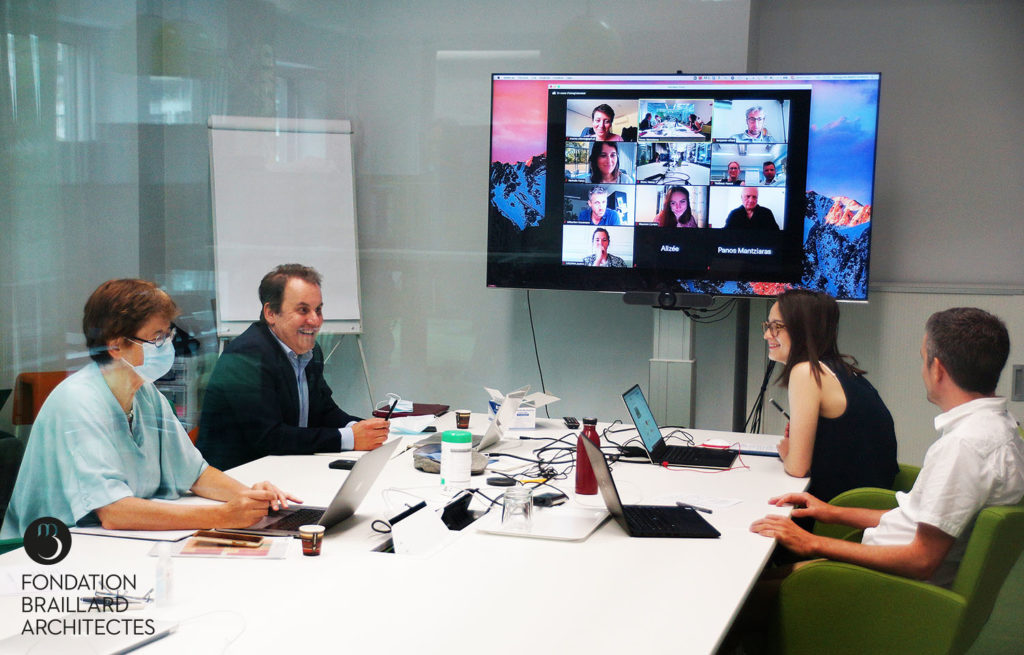The soil as an active agent of the transition
The pedological and biological nature of soil makes it an active agent, even in urban conditions in which it has been considered up to now a neutral support for construction. Indeed, its decarbonisation capacities must be included in calculating the city’s overall carbon footprint. The soil is also an agent of protection of the lower layers, of cooling, of infiltration, of phytoremediation and of biodiversity.
By considering soil in the design process, the vicious circles of climate change can be turned into virtuous circles of adaptation to extreme events and their stabilisation.
The relationship to soil in urban areas is very poor today: mineralisation, waterproofing, pollution. The prospect of a carbon-free city in 2050 requires a total transformation of this condition, with a commitment to reverse processes: de-waterproofing, increased plant coverage and depollution in the living layers of the soil.
In the case of the Marronniers, a pilot laboratory can get involved in this direction. Using water to depollute, increase biodiversity, create local ecosystems and connect the neighbourhood with refreshing natural corridors.
For this, there needs to be an adaptation and an evolution:
- Current legal tools,
- Design tools for architects/town planners/landscapers,
- Constructive standards,
- Project and implementation assessment tools.
Finally, the soil must be positioned back at the centre of the system of political action, social sensitivity and techno-scientific expertise.

Team
- Alizée BONNEL
Architect, Studio Vulkan Zurich
I am project manager at the Studio Vulkan agency. I began my architectural studies in France at the EAVT in Marne-la-Vallée. For my double Franco-German master, I then went to Karlsruhe and Strasbourg. I am a qualified architect specialising in urban planning and large-scale landscapes. My studies and professional experience have always, even today, led me to address this transdisciplinarity, which is essential for me. - Maureen CERTAIN
Maureen CERTAIN Architect, doctoral student, ENSA Toulouse
I am a young architect, freshly graduated from ENSA Toulouse, where I did my entire master’s degree with the exception of an exchange year at the UIC Chicago College of Urban Planning. This year, I embarked on a doctoral course based on a Water, Heritage and Territory triptych in Jaipur, co-directed by CEPT Ahmedabad. - Pascal MICHEL
Urban architect, urban development department, urban planning office, state of Geneva
Urban planner for the State of Geneva for about ten years, I have until now mainly worked at the level of neighbourhoods, whether in their design or in the evolution of regulatory tools and work processes governing their implementation. Faced with the challenges of our time, I aspire today to a more integrated practice, mixing territorial scales, living things and player systems, which are all dimensions addressed during my initial training in political sociology and spatial planning. - Marine VILLARET
Architect-urban planner, doctoral student EPFL
EPFL architect who, starting already during her training, focused on landscape town planning and interdisciplinarity with ecology, particularly during an exchange year in Sweden where she could follow the Architecture and Planning Beyond Sustainability master’s programme. She worked within the Atelier Descombes Rampini on territorial planning and river revitalisation projects, as well as for the Urbanism laboratory of the EPFL, directed by P. Viganò, on research around “metropolitan agriculture” carried out by E. Cogato-Lanza. She is currently carrying out a doctoral thesis on the design of ‘socio-ecological networks’, a living project allowing the acquisition of new urban planning skills from environmental sciences, contributing to the ecological transition.

